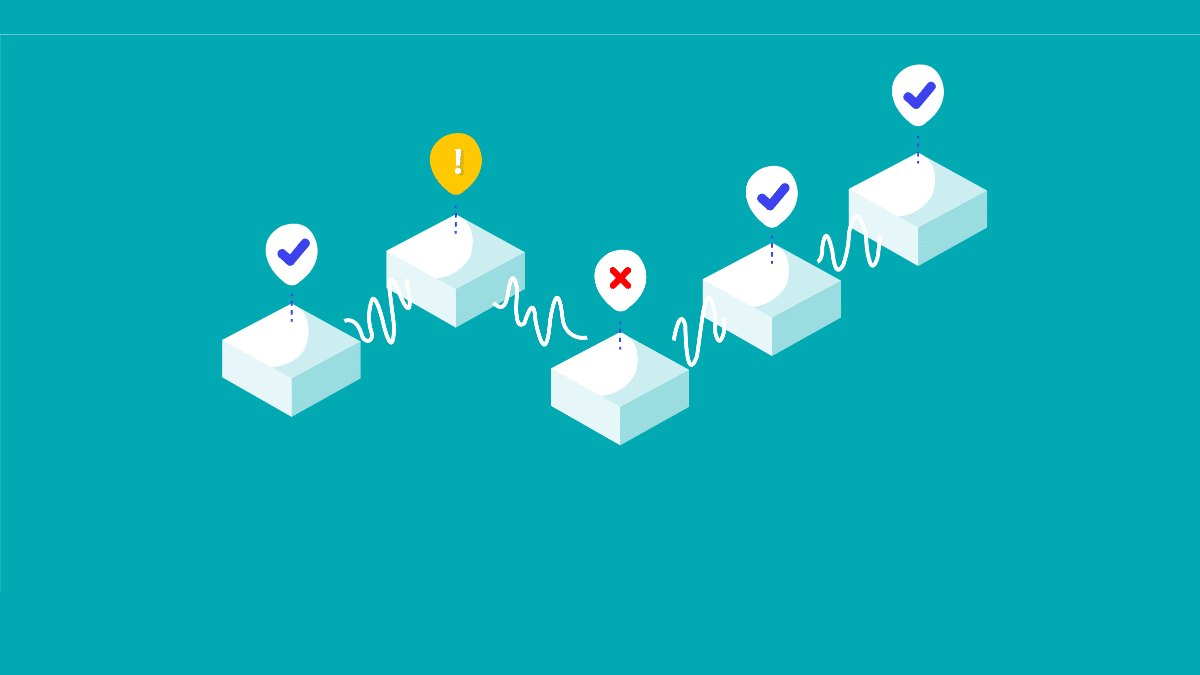You have run many different tests over the many iterations cycle of working on a product. But you won’t know for sure if your application is reliable until you do end-to-end testing. These tests check the entire path of a user request: from the UI to the internal structure of the software. Moreover, E2E testing detects the most non-obvious errors in the service. We figure out what end-to-end testing gives to businesses.
Contents
From beginning to the end: dive into the definition
End-to-end tests are created to go through the entire path of a user request from its beginning to its end. Clicking on a button, filling out a form, and calling the context menu are examples of how a user starts interacting with an application. Processing the request by the application database and responding to the user is an example of an endpoint. Since it’s about two ends of the user’s path, this was the basis for the very name of this method.
As we can see, E2E testing includes testing the UI together with testing the operation of the internal systems of the application, which are invisible to the customer. But let’s get back to the definition. As the name suggests, end-to-end (E2E) testing is a testing methodology that provides complete verification of the software. E2E testing is based on a simulation of a real user environment and real user actions.
To illustrate, let’s imagine that we are moving into a smart home. All work has just been completed, no one has lived in the house yet, and to start its exploitation, all systems need to be tested. It is clear that in this case, the failure of any function becomes unpleasant and even dangerous for our health and life. Therefore, a building firm conducts E2E tests to make sure that all systems work as expected both in terms of user interface and backend systems.
Numerous sensors make it possible to understand how the house as a system reacts to extreme weather conditions, potential emergencies, the failure of one of the systems, and so on. All these tests give an idea of all the possible vulnerabilities of such a house. As a result, the building company can fix everything before we move.
It sounds useful, but it’s a bit complicated, right? Automation saves us. E2E tests are easily automated and allow you to check the system from all possible angles. Thus, a robust test automation management platform [1] makes it easy to include E2E tests in the testing workflow.
What you gain with the E2E testing
End-to-end testing provides these benefits:
Full app testing before release.
E2E testing is at the top of the testing pyramid. This is the last and therefore most important way to fully test the entire application before it is accessed by the end user. E2E testing gives us confidence that we will not discover bugs in our software some months after the release.
Insurance against software downfall.
Most software systems consist of numerous subsystems. If one of them fails, it can cause the entire software system to crash. End-to-end testing is your defense against such risks, as you test the APIs, interactions, and vulnerabilities of all system components.
Moreover, here are some points to complete a list of all the strengths of end-to-end testing:
- Increasing test coverage;
- Ensuring the correct work of the application;
- Identification of errors that other types of testing could not detect.
E2E testing has undeniable advantages. However, in practice, it is not easy to implement. One of the key challenges of this approach is the availability of the test environment. Each application needs to be tested in a client environment, but often it is not available for testing. The simplest way is to use cloud services like Zebrunner Device Farm and Zebrunner Selenium Grid.[2] You get access to hundreds of devices, as well as different versions of browsers, operating systems, and their combinations.
A bit about the E2E testing workflow
So, we know the advantages of E2E testing, as well as the best approach to minimize its disadvantages. Let’s look at the main stages of end-to-end testing.
Stage #1. This is planning. You determine which scenarios to test first based on the resources you have.
Stage #2. Design. This component is about test specifications, test case creation, and automation of test scenarios (if it’s possible to automate them).
Stage #3. Execution of tests. You run tests and collect results.
Stage #4. Processing of results. You see which tests are missing and send the information to the developers. It’s also recommended to add your tests to the CI pipeline. This will help developers to know in time if they have broken something by changing the code.
ссылка 2+3

